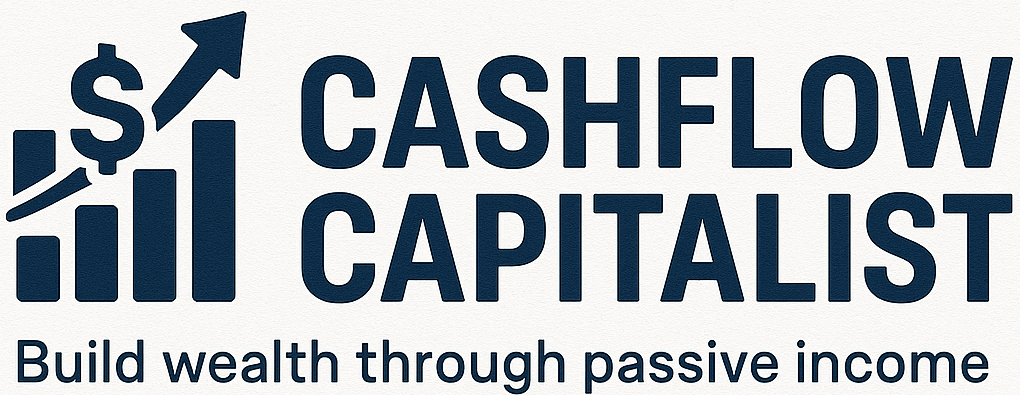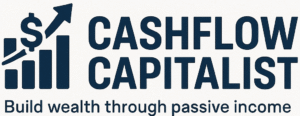How to Earn Monthly Income from ETFs in Canada: A Step-by-Step Guide to Building Consistent Cash Flo
Are you tired of waiting until retirement to enjoy your money? What if you could earn steady income every single month—without working overtime? In this guide, we’ll show you how Canadians are using ETFs to generate reliable monthly cash flow in 2025.
Exchange-Traded Funds (ETFs) are a popular choice for regular income. In Canada, investors can pick from many dividend ETFs that pay monthly dividends. This makes them a great option for those looking for predictable returns.

Whether you’re looking to build a side income or achieve financial freedom, this guide offers a step-by-step plan. It helps you reach your goals through tfsa investing and a smart etf income strategy.
Key Takeaways
- Understand how ETFs work and their benefits for generating passive income in Canada.
- Learn about popular Canadian dividend ETFs that pay monthly.
- Discover how to set up a portfolio that generates consistent cash flow.
- Explore the advantages of using a TFSA for tfsa investing.
- Get insights into creating an effective etf income strategy.
Understanding ETFs as Income Generators
Exchange-Traded Funds (ETFs) are popular for making money each month in Canada. They are like investment funds that trade on stock exchanges. They hold a mix of securities like stocks, bonds, or commodities.
What Are Exchange-Traded Funds (ETFs)?
ETFs help investors spread their money across different areas. They track a specific index, sector, or asset class. This way, they can lower risk and possibly earn more.
ETFs are flexible. They can be traded all day. This lets investors quickly adjust to market changes.
How ETFs Generate Income for Investors
ETFs make money in several ways. They earn from dividends, interest, and selling securities. Dividend ETFs focus on stocks that pay out dividends. Covered call ETFs make money by selling call options on their stocks.
The Advantage of ETFs Over Individual Stocks for Income
ETFs have big benefits over individual stocks for income. They offer instant diversification, which lowers risk. They also make it easy to invest in different areas, helping manage income.

By learning how ETFs work and how they make income, Canadian investors can make smart choices. They can add these funds to their portfolios.
Types of Income-Producing ETFs in Canada
The Canadian ETF market offers many ways to earn income. Investors can pick from various ETFs, each with its own benefits and features.
Dividend ETFs: Steady Income from Established Companies
Dividend ETFs focus on big companies that pay out dividends regularly. They give a steady income and are often less shaky than other investments. In Canada, you can find ETFs that track major indexes like the S&P/TSX.
Covered Call ETFs: Enhanced Yield Through Option Strategies
Covered call ETFs use options to boost their returns. They sell call options on the stocks they own. This can give a steady income, but it might limit gains during big market rises.

REIT ETFs: Real Estate Income Without Property Management
REIT ETFs let you invest in real estate without managing properties. They buy into real estate trusts (REITs) that earn rental income. A big part of this income goes to the investors.
Bond and Fixed-Income ETFs: Stability with Predictable Payments
Bond ETFs hold a mix of bonds, giving regular interest income. They add diversity and are safer than stocks, making them good for cautious investors or those wanting steady income.
| ETF Type | Primary Income Source | Risk Level |
|---|---|---|
| Dividend ETFs | Dividends from established companies | Medium |
| Covered Call ETFs | Premiums from selling call options | Medium to High |
| REIT ETFs | Rental income from real estate | Medium |
| Bond ETFs | Interest from bonds | Low to Medium |
Knowing about the different income ETFs in Canada helps investors build a well-rounded portfolio. This meets their income goals.
Monthly Income ETFs Canada: Top Picks for 2025
Canadian investors are looking for reliable monthly income ETFs for 2025. They want consistent and predictable income. This has led to the rise of various ETFs for different strategies.

BMO Covered Call ETFs (ZWC, ZWB, ZWU)
BMO Covered Call ETFs are popular for regular income. They use a covered call strategy. This means selling call options on stocks to earn more.
The BMO Covered Call ETFs, like ZWC, ZWB, and ZWU, have a diverse portfolio. They focus on Canadian and US equities.
iShares Monthly Income ETFs (XEI, CDZ, XRE)
iShares has monthly income ETFs for regular distributions. ETFs like XEI, CDZ, and XRE focus on different areas. They include dividend-paying stocks, covered calls, and REITs.
These ETFs are known for their liquidity and diversification. They offer benefits for investors.
Harvest and Hamilton Enhanced Income ETFs (HDIF, HYLD)
Harvest and Hamilton offer enhanced income ETFs. HDIF and HYLD focus on dividend stocks and high-yield bonds. They aim to provide regular income and growth.
CI First Asset and Horizons Monthly Pay Options (FIE, CASH.TO)
CI First Asset and Horizons have monthly pay ETFs for regular income. FIE and CASH.TO use different strategies, like covered calls and dividend investments. They aim to provide predictable income.
When picking a monthly income ETF, consider the strategy, fees, and past performance. The right ETF can help you meet your income needs and financial goals.
Building Your Monthly Income ETF Portfolio
To create a successful monthly income ETF portfolio, first understand your income needs and risk tolerance. This step is key to making smart investment choices. It helps you build a portfolio that aligns with your financial goals.
Determining Your Income Goals and Risk Tolerance
Before you start investing in ETFs, figure out how much monthly income you need. Also, think about how much risk you’re okay with. Your income goals will guide your choice of ETFs. Your risk tolerance will help you decide between riskier, higher-yielding ETFs and safer, lower-yielding ones.
Balancing Growth and Income in Your Portfolio
A good ETF portfolio balances income and growth. Income-focused ETFs offer regular payouts, while growth-oriented ETFs can boost your portfolio’s value. Finding the right balance is essential for reaching your long-term financial goals.

Creating a Diversified ETF Mix for Consistent Monthly Payments means picking a variety of ETFs for steady income and low risk. This mix could include dividend, covered call, REIT, and bond ETFs. Diversification keeps your portfolio strong in all market conditions.
Sample Portfolios for Different Income Needs
Investors have different income needs. For example, a conservative investor might put 70% in bond ETFs and 30% in dividend ETFs. A risk-taker might choose 50% covered call ETFs and 50% REIT ETFs. The best mix for you depends on your financial situation and goals.
How Canadian ETF Distributions Actually Work
Investors in Canada can get a steady income from ETFs. But, how do these distributions work? Knowing how ETF distributions work is key to getting the most from your investments.
Distribution Frequency and Payment Schedules
ETFs in Canada pay out income at different times. This can be monthly, quarterly, or yearly. The timing depends on what the ETF invests in. For example, ETFs that focus on dividends usually pay out quarterly. Those that invest in bonds might pay monthly.
Understanding Return of Capital vs. Dividends vs. Interest Income
ETFs can give you different kinds of income. You might get dividends, interest, or return of capital. Dividends come from the profits of companies. Interest is from bonds. Return of capital is your money back and isn’t taxed when you get it.
How Distribution Yields Are Calculated
The yield is found by dividing the annual distribution by the ETF’s NAV. This shows what you can expect from the distributions alone.
Ex-Dividend Dates and When You’ll Receive Payments
The ex-dividend date is important for ETF investors. It tells you if you’ll get the next distribution. To qualify, you must own the ETF before this date. Payments usually go out a few weeks after the ex-dividend date.
| Distribution Type | Frequency | Tax Implications |
|---|---|---|
| Dividends | Quarterly | Taxable as income |
| Interest Income | Monthly/Quarterly | Taxable as income |
| Return of Capital | Varies | Not taxable at distribution |
Optimizing Your ETF Income Strategy
You can boost your ETF income with a few simple strategies. By improving your investment approach, you can get a more consistent and possibly higher income from your ETFs.
Staggering ETF Purchases for More Frequent Payments
Staggering your ETF purchases is an effective way to boost your income. Buy different ETFs with various payout dates. This way, you get income more often, whether monthly or quarterly.
ETF Laddering Techniques for Consistent Cash Flow
ETF laddering helps you get a steady cash flow. Invest in ETFs with different maturity dates or distribution schedules. This creates a ladder that gives you regular income.
Reinvestment Strategies to Grow Your Income Stream
Reinvesting your ETF distributions can grow your income over time. Use a Dividend Reinvestment Plan (DRIP) to automatically reinvest your distributions. This can lead to higher returns.
When to Use DRIP vs. Taking Cash Distributions
Choosing between DRIP and cash distributions depends on your goals. If you need cash now, take the distributions. But if you want to grow your portfolio, reinvesting through DRIP is better.
| Strategy | Benefits |
|---|---|
| Staggering ETF Purchases | More frequent income, reduced reliance on single ETF |
| ETF Laddering | Consistent cash flow, potentially higher returns |
| DRIP Reinvestment | Growing income stream, compounding returns |
Tax-Efficient ETF Income Strategies for Canadians
To get the most from your ETF income in Canada, knowing the tax rules is key. Using the right accounts and investments can cut your taxes and boost your earnings.
Maximizing Tax-Free Income with TFSAs
Using a Tax-Free Savings Account (TFSA) is a smart way to earn tax-free income. Your ETFs grow and you can withdraw them without paying taxes. This makes TFSAs perfect for income-generating ETFs. Canadians can save a lot in taxes with the current limits.
Tax-Deferred Growth in RRSPs
Registered Retirement Savings Plans (RRSPs) are also great for tax-efficient growth. You get a tax break for putting money in, and your investments grow without taxes until you take them out. This is good for those saving for the long term and want to keep taxes low.
Non-Registered Accounts and Tax Considerations
Many also keep ETFs in non-registered accounts. It’s important to know how taxes work on ETF income in these accounts. Knowing the difference between return of capital, dividends, and interest can help manage your taxes better.
Corporate Class ETFs and Tax Efficiency
Corporate Class ETFs help with tax efficiency too. They are set up to reduce capital gains distributions, which is good for non-registered accounts where gains are taxed.
| Account Type | Tax Treatment | Best For |
|---|---|---|
| TFSA | Tax-Free | Income-generating ETFs, long-term investments |
| RRSP | Tax-Deferred | Retirement savings, tax-deductible contributions |
| Non-Registered | Taxable | Flexible investments, tax-efficient management |
By using these tax-efficient strategies, you can make the most of your ETF income. This helps you reach your financial goals more easily.
Setting Up Your ETF Income Portfolio: A Step-by-Step Approach
Creating a steady income stream with ETFs is achievable. It starts with choosing the right brokerage platform and ends with tracking your investments. Here’s how to set up a successful ETF income stream in Canada.
Step 1: Choosing the Right Brokerage Platform
The first step is picking a good brokerage platform. In Canada, Wealthsimple and Questrade are top choices. They offer a variety of ETFs and easy-to-use interfaces. Look at fees, account types, and customer support when making your choice.
Step 2: Funding Your Account and Setting Up Regular Contributions
After picking your platform, fund your account. Most platforms let you set up regular contributions. This helps grow your ETF portfolio over time. A monthly contribution plan can help with dollar-cost averaging.
Step 3: Selecting and Purchasing Your ETFs
With your account ready, start picking and buying ETFs. Mix dividend, covered call, and REIT ETFs for a diverse income. Look into iShares and BMO ETFs to match your strategy.
Step 4: Setting Up Dividend Reinvestment or Cash Payments
Decide how to handle your distributions next. Many reinvest to benefit from compounding. Others prefer cash payments. If you reinvest, consider a Dividend Reinvestment Plan (DRIP).
Step 5: Tracking and Monitoring Your Income Stream
Keep an eye on your ETF income stream. Use your platform’s tools or third-party apps. This helps you make smart portfolio decisions and reach your income goals.
By following these steps, you can build a diversified ETF income portfolio. It will give you a steady monthly income. Always review and adjust your portfolio to meet your financial goals.
Monitoring and Maintaining Your Income Portfolio
Building an ETF income portfolio needs constant watching to keep it on track with your money goals. Regular checks help you adjust quickly to market changes and personal financial shifts.
Rebalancing Your ETF Holdings
Rebalancing is key to keeping your ETF portfolio in check. It means checking your investments and tweaking the mix of ETFs to match your asset goals. ETF rebalancing helps control risk and can boost long-term gains. For example, if one ETF does too well, you might sell some and spread the money around to keep your balance right.
Responding to Changes in ETF Performance or Distributions
Keeping up with your ETFs’ performance and any changes in their payouts is essential. If an ETF’s payout changes a lot or its assets are hit by market moves, you might need to tweak your ETF portfolio adjustments. For instance, if an ETF’s assets are affected by 2025’s economic changes, rebalancing could be necessary to keep your income steady.
Tools for Tracking Your Monthly Income
Using the right tools makes ETF income tracking easier. Many brokerages have features to track your income in real-time. Also, financial planning software can predict future income and spot any gaps.
Warning Signs That Require Portfolio Adjustments
Knowing the warning signs for your ETF income portfolio is vital. Look out for big changes in payout yields, shifts in ETF assets, or changes in your income needs. By staying alert and making quick ETF portfolio adjustments, you can keep your portfolio aligned with your financial goals.
Conclusion: Your Path to Consistent ETF Income in Canada
Follow the steps in this guide to get a steady monthly income from ETFs. This will help you reach your financial goals and get closer to financial freedom in Canada.
Creating a good etf income strategy is key for making passive income in Canada. With a diverse ETF portfolio, you can get a steady income. This is great for adding to your retirement income or growing your wealth over time.
To hit your etf income goals, figure out how much income you need. Then, check how much risk you can take and pick the right ETFs for your portfolio. This will help you build a stable passive income in Canada, moving you closer to financial freedom.
Now that you know how to start, begin building your ETF income portfolio today. Start making the income you need to reach your financial goals.
FAQ
What are the best ETFs for generating monthly income in Canada?
Top monthly income ETFs in Canada include BMO Covered Call ETFs (ZWC, ZWB, ZWU). Also, iShares Monthly Income ETFs (XEI, CDZ, XRE) and Harvest and Hamilton Enhanced Income ETFs (HDIF, HYLD) are great choices.
How do dividend ETFs generate income for investors?
Dividend ETFs invest in companies that pay regular dividends. This gives investors a steady income.
What is the advantage of using a Tax-Free Savings Account (TFSA) for ETF investments?
TFSAs let investors earn income from ETFs without paying taxes. This makes them a good choice for monthly income.
How often do ETFs distribute income to investors?
ETFs distribute income at different times. Some give out income monthly, quarterly, or annually. It depends on the investments and the ETF’s strategy.
What is ETF laddering, and how can it help with consistent cash flow?
ETF laddering means buying ETFs at different times. This helps get more frequent payments. It makes cash flow more consistent.
How do I choose the right brokerage platform for my ETF investments?
Look at fees, investment options, user interface, and customer support when choosing a brokerage. Find one that fits your needs best.
What is the difference between return of capital, dividends, and interest income from ETFs?
Return of capital is when you get back your original investment. Dividends come from the ETF’s investments. Interest income is from fixed-income securities.
How can I maximize my ETF income while minimizing taxes?
Use tax-efficient strategies to boost your ETF income while cutting taxes. Hold tax-inefficient investments in tax-deferred accounts. Use TFSAs for tax-free income.
What are the benefits of using a Dividend Reinvestment Plan (DRIP) for my ETF investments?
DRIPs let you reinvest dividend payments. This can increase your returns over time. It creates a snowball effect.
How do I monitor and maintain my ETF income portfolio?
Regularly check your ETF holdings and income stream. Rebalance your portfolio as needed. This keeps it in line with your goals and risk tolerance.




